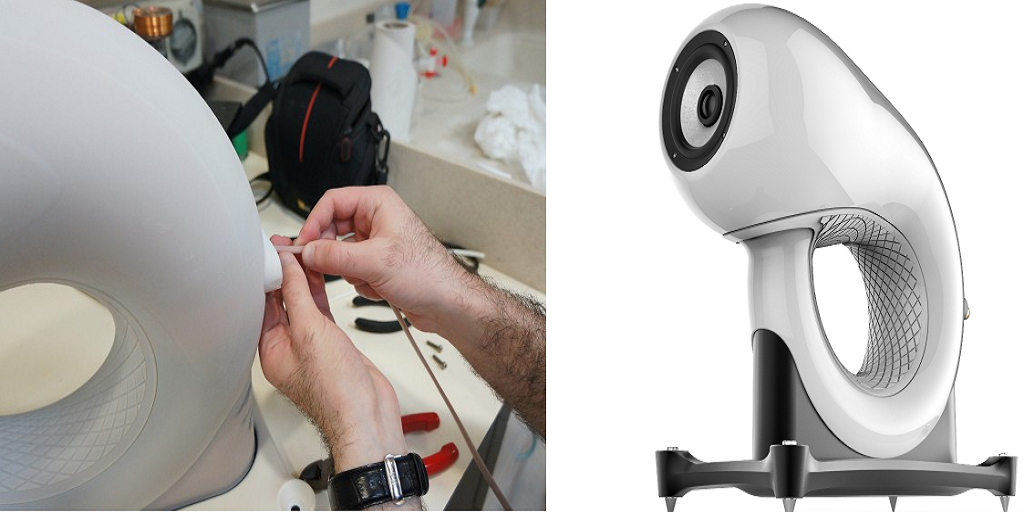
“With 3D printing I was able to quickly study the acoustic response of the geometry and different material configurations and determine which was most applicable to speaker cabinets. Other manufacturing or modeling techniques would not allow such freedom, much less in the required time frame.”
The Aleph1 is comprised of “self-feeding geometry” that preserves the back wave’s acoustic energy. This allows the energy to participate in the process of sound reproduction. Simply stated: the loop holds the back wave energy instead of letting it spill out and distort the front wave’s own primary energy. This makes so much sense! A more natural and open sound is promised from the Aleph1 — with higher detail and greater separation.
“The model is 3D printed in a single piece to allow complex internal geometries while maintaining structural integrity. Having a physical model was instrumental to studying the theoretic principles behind the product and assessing its feasibility.”
Are you confused, music lovers? Why hasn’t anyone thought of this before? As a 3D printing writer, I spend a little time each day amazed at how 3D printing can usher in such transformative changes to everyday objects — and stereo speakers are high on that list, right? I personally haven’t heard the Aleph1 yet, but the science sounds right. Think about the unique experience of holding up a sea shell to your ear to listen, or why the French Horn is designed the way it is.
Dekel hopes that this design will have an opportunity for commercial marketing. (Or he could always make the design open source and let us all in on the fun.) From the 3D printed sound of his “sound” design work, I am sure we’ll be hearing about this again very soon. His website is definitely worth taking the time to check out. Tell us what you think in the 3D Printed Stereo Speaker forum over at 3DPB.com.
